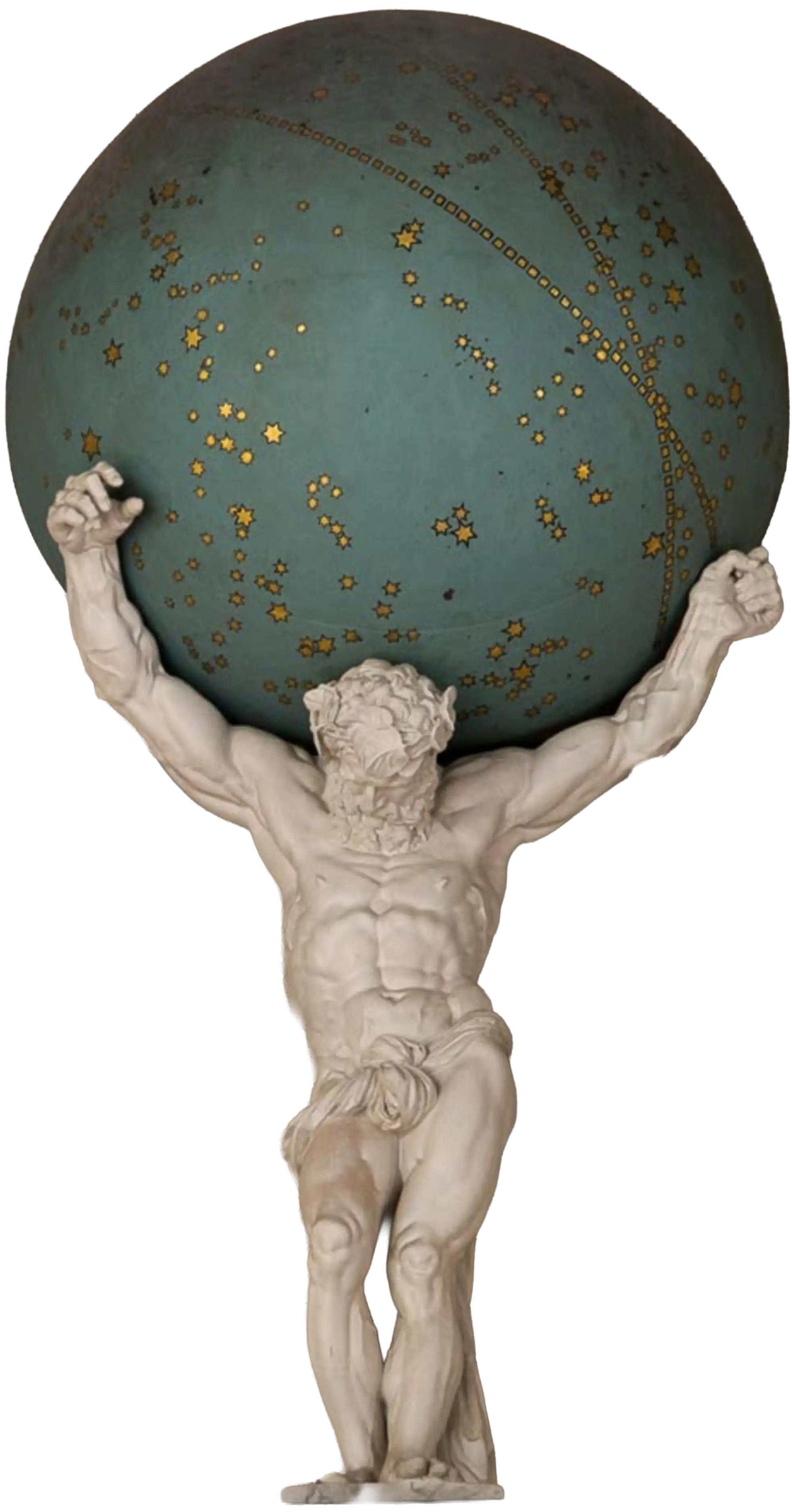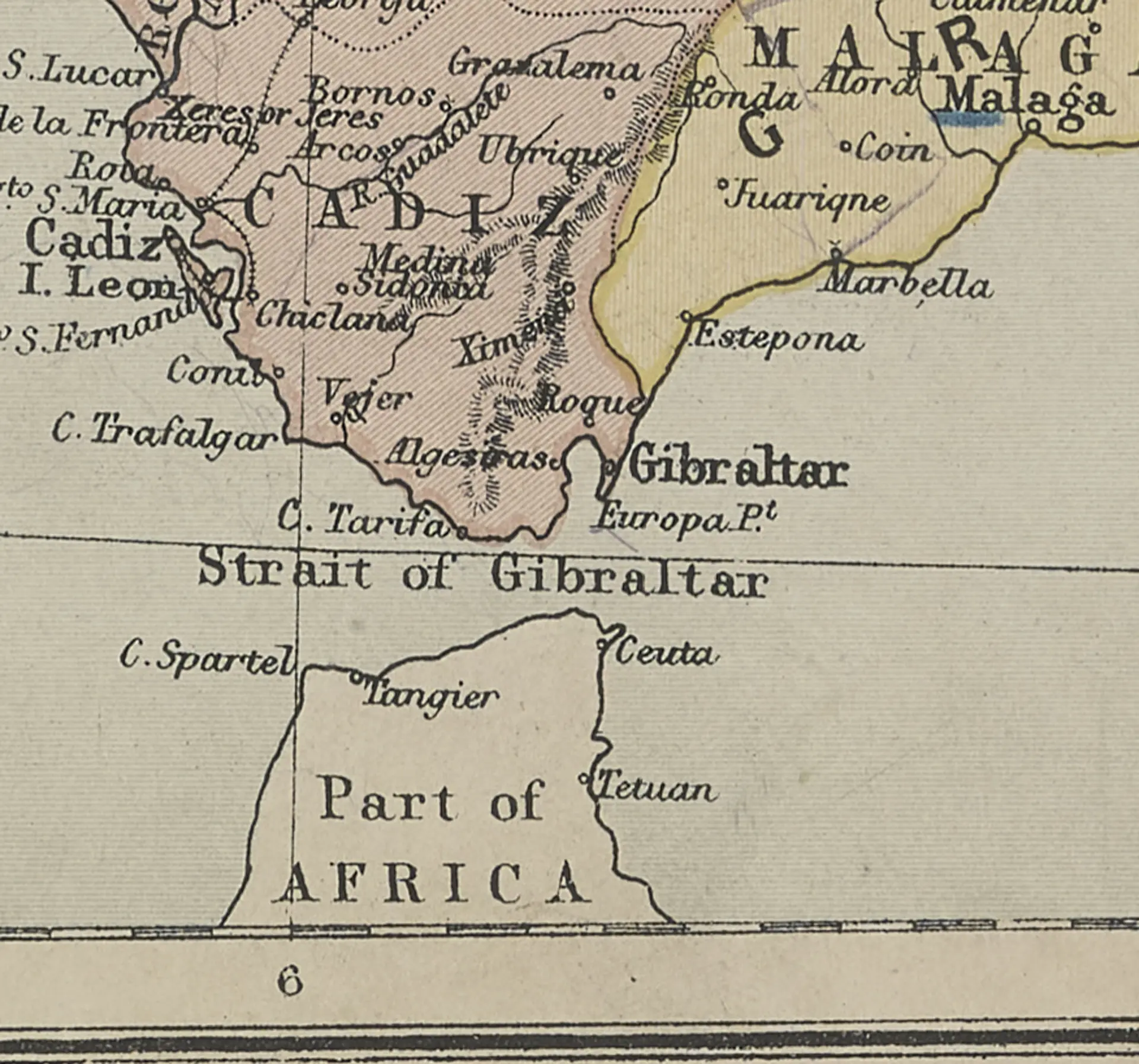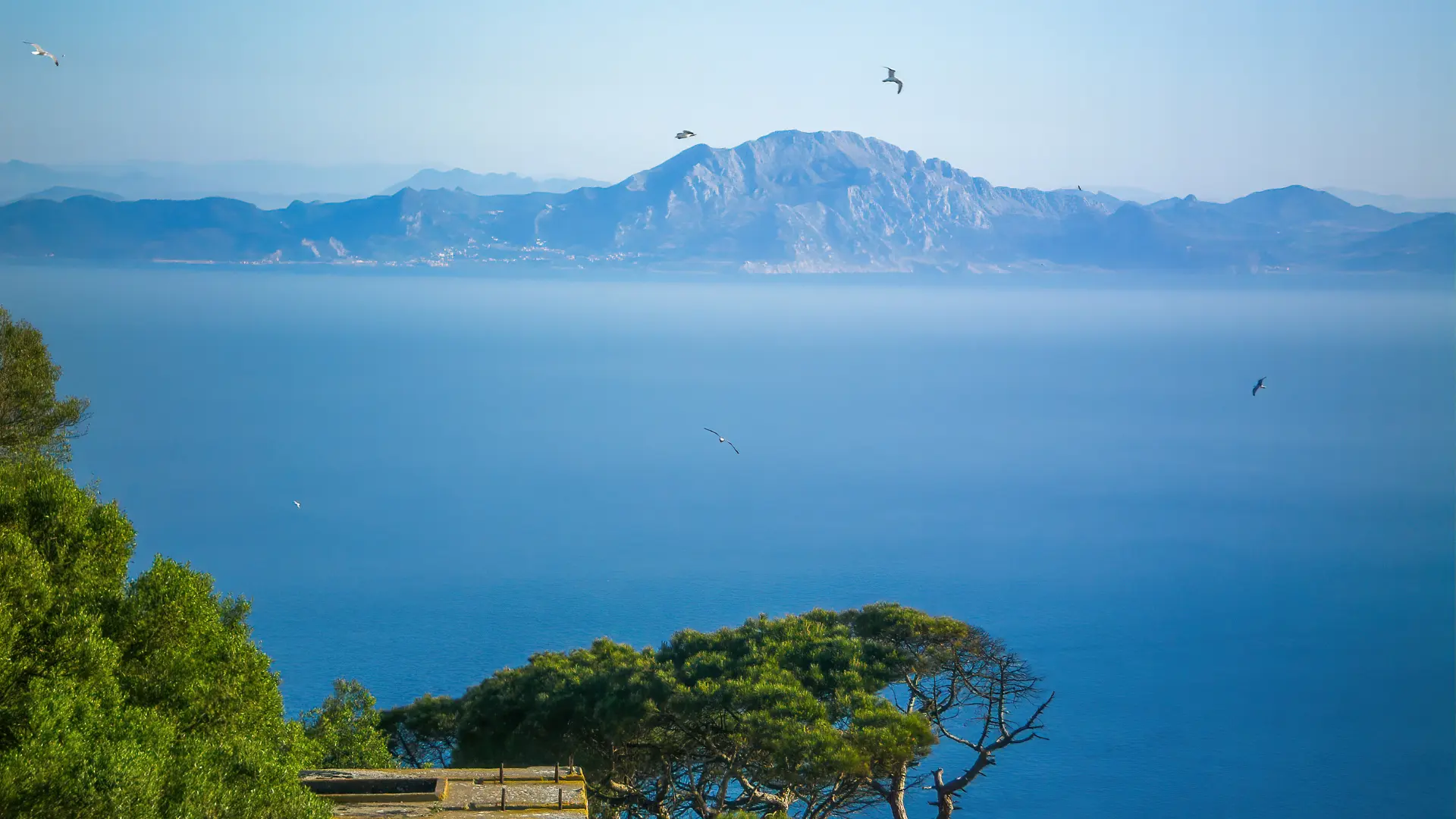The Marks

In Ancient Times, Atlas was the giant who held up the heavens above the world. Later it was the world itself he was supposed to hold up.
This section is about the Atlas as a whole, rather than particular marks or plates. James Joyce was not the only person who defaced it. As suggested above, Nora may have made some marks. Francis Irwin, the Ulster-born, real-life headmaster of Clifton School, may have been responsible for many others, particularly pencil marks on the map of Ireland. A set of wavery pencil lines in the Ulster area could be by him. Pencil lettering updating the names of Queens and Kings counties to Leix and Offaly respectively – reflecting Irish independence in 1922 – would probably have been by him if he was still alive.
The only other users in the life-cycle of the Atlas, at least until it left Frank Irwin’s possession, most likely on his decease, would have been other members of staff at Clifton School. There are signs of multiple use on the map of Palestine in particular, but also on the maps of some parts of the British Empire, notably India. Overall it looks as though the Atlas was in active school use for a relatively short time (months rather than years), and the pupils were not allowed to make marks.
I have counted 238 marks in total, mainly checking towns but also natural features such as islands, straights or capes. Of these, 165 are in blue or red crayon, 105 of which are on just three plates, England, Scotland and Russia. The crayon marks which are on other plates can often be related to an anecdote or other passage in Ulysses.
There are a few doodles additional to these, with no obvious connection to Ulysses.
Thus the evidence is strong that these blue or red crayon marks were a) made by a single, atypical user and b) that user was James Joyce. The remaining possibility is that the marks could have been made by a sophisticated reader responding to Ulysses as it was published in parts, or in complete editions from 1922.

Judging from the marks, Joyce had no particular interest in Gibraltar when he was in possession of the Atlas. There is a faint pencil tick against Europa Point, but that could as well have been made for imperialistic as for literary reasons.
The Texts
Penelope
I went up Windmill hill to the flats that Sunday morning with captain Rubios that was dead spyglass like the sentry had he said hed have one or two from on board I wore that frock from the B Marche paris and the coral necklace the straits shining I could see over to Morocco almost the bay of Tangier white and the Atlas mountain with snow on it and the straits like a river so clear Harry Molly darling I was thinking of him on the sea all the time after at mass when my petticoat began to slip down at the elevation weeks and weeks I kept the handkerchief under my pillow for the smell of him
Discussion
Joyce was an inveterate borrower of money and was always very careful not to put himself in a position where he could be accused of stealing it. His avoidance of the very word ‘Atlas’ in his correspondence, and much later in writing Ulysses, should be seen in this light. His treatment of the Atlas could easily have be seen as defacement. He could well have been blamed for the blotted address and various ink blots and pencil scrawls as well. The scenario suggests he took good care to return the book but made sure he was out of Ireland before the owner received it.
When Joyce does finally write the word Atlas, he makes sure to embed it in a marvellous paragraph and marvellous phrases.
- ‘The straits shining I could see over to Morocco almost the bay of Tangier white and the Atlas mountain with snow on it and the straits like a river so clear.’
It’s about light, and youth and happiness. But Joyce may have allowed himself some poetic licence with the snow. What Molly calls the Atlas mountain is generally known today as Jebel Musa (the mountain of Moses). Being quite a small mountain, under 900 metres, and close to the tropics, it rarely sees lasting snow.

The very name Atlas is rich with connotations. In mythology he was a giant condemned by Zeus to hold the world up on his shoulders. Mercator called his book of world maps an atlas because it held the world between its covers.
And in Greek myth (depending on which version one chooses), Atlas was the father of the seven Pleiades, one of whom was Calypso, who kept Ulysses captive on her island of Ogygia for seven years. Joyce has a minor “Ca” thread in Ulysses linking Cappoquin, Calypso and Candahar.